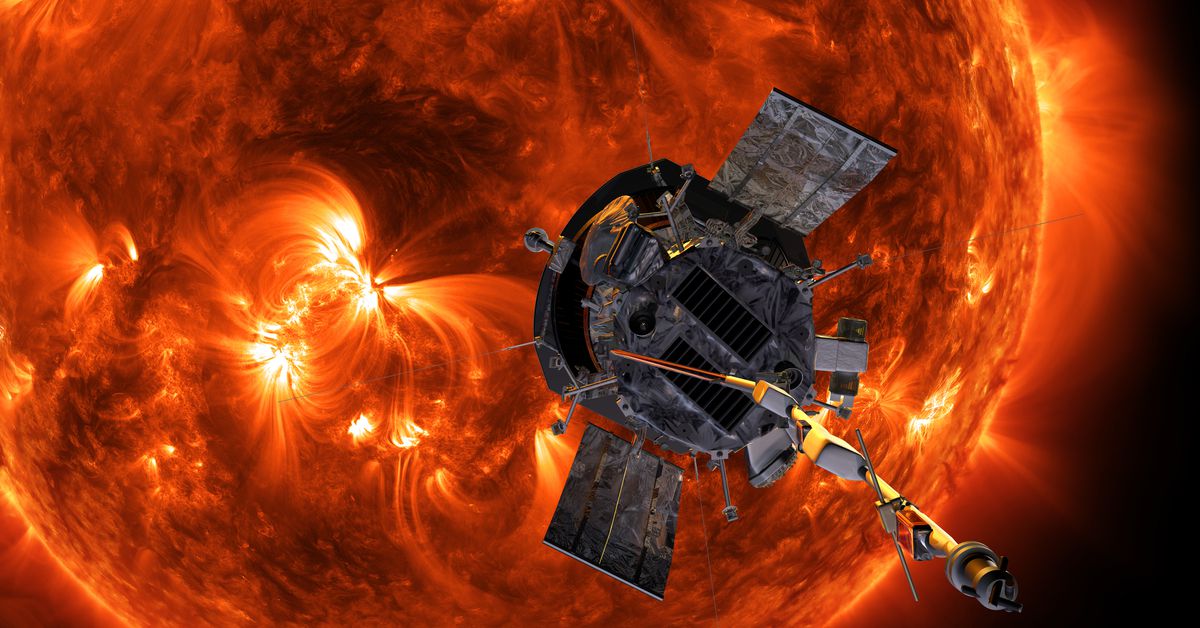Introduction
The sun is a fascinating celestial body that has been studied by scientists for centuries. Its intense heat and radiation have made it a challenging task to send spacecraft close to its surface. However, NASA’s Parker Solar Probe has successfully accomplished this feat, setting a new record by coming within 3.8 million miles of the sun’s surface. In this article, we will explore the mission’s objectives, the probe’s design, and what scientists hope to learn from this close encounter.
The Mission Objectives
The Parker Solar Probe was launched in August 2018 with a primary objective of studying the corona, the outer atmosphere surrounding the sun. The corona is a region of intense heat and radiation that has puzzled scientists for decades. To understand why it gets so hot, NASA scientists are using the Parker Solar Probe to collect data on the solar wind, heat, and energetic particles accelerated to near light speed.
The Close Flyby
On December 24th, the Parker Solar Probe flew within 3.8 million miles of the sun’s surface at a velocity of approximately 430,000 miles per hour. This close encounter marked a significant milestone in the mission, as it was the closest any human-made object had ever come to the sun. During this time, mission operations were out of contact with the probe, but on December 26th, NASA received confirmation that the Parker Solar Probe transmitted a signal back to Earth, indicating its good health and normal operation.
The Probe’s Design
To withstand the intense heat and radiation from the sun, the Parker Solar Probe is equipped with a Sun-facing heat shield made of carbon-carbon composite material. The shield can withstand temperatures up to 2,500 degrees Fahrenheit, while the probe itself remains at a relatively cool temperature of around 85 degrees Fahrenheit. This design allows the probe to collect data on the solar wind and corona without being damaged by the intense radiation.
What Scientists Hope to Learn
The close flyby of the Parker Solar Probe is expected to provide scientists with valuable insights into the sun’s behavior. By studying the solar wind, heat, and energetic particles accelerated to near light speed, researchers hope to better understand the mechanisms that drive these phenomena. This knowledge will help scientists predict space weather events, such as coronal mass ejections and solar flares, which can have significant impacts on Earth.
The Mission Timeline
- August 2018: The Parker Solar Probe was launched by NASA in collaboration with Johns Hopkins Applied Physics Laboratory.
- December 20th: The probe set off on its mission to the sun.
- December 24th: The Parker Solar Probe flew within 3.8 million miles of the sun’s surface at a velocity of approximately 430,000 miles per hour.
- December 26th: NASA received confirmation that the Parker Solar Probe transmitted a signal back to Earth, indicating its good health and normal operation.
Next Steps
Now that NASA has confirmed the success of the close flyby, the next step is for the Parker Solar Probe to send detailed telemetry data on its status. This information will be transmitted to Earth on January 1st, providing scientists with valuable insights into the probe’s performance during the close encounter.
Conclusion
The Parker Solar Probe’s close encounter with the sun marks a significant achievement in space exploration. By studying the solar wind, heat, and energetic particles accelerated to near light speed, researchers hope to better understand the mechanisms that drive these phenomena. This knowledge will have far-reaching implications for our understanding of the sun and its impact on Earth.
Frequently Asked Questions
- Q: What is the Parker Solar Probe’s mission objective?
A: The primary objective of the Parker Solar Probe is to study the corona, the outer atmosphere surrounding the sun. - Q: How close did the Parker Solar Probe come to the sun’s surface?
A: The probe flew within 3.8 million miles of the sun’s surface. - Q: What kind of data will the Parker Solar Probe collect during its mission?
A: The probe is designed to collect data on the solar wind, heat, and energetic particles accelerated to near light speed.
Additional Resources
For more information on the Parker Solar Probe and its mission objectives, please visit:
- NASA’s Parker Solar Probe Website: https://parkersolarprobe.jhuapl.edu/
- Johns Hopkins Applied Physics Laboratory’s Parker Solar Probe Page: https://apod.nasa.gov/apod/ap181116.html




